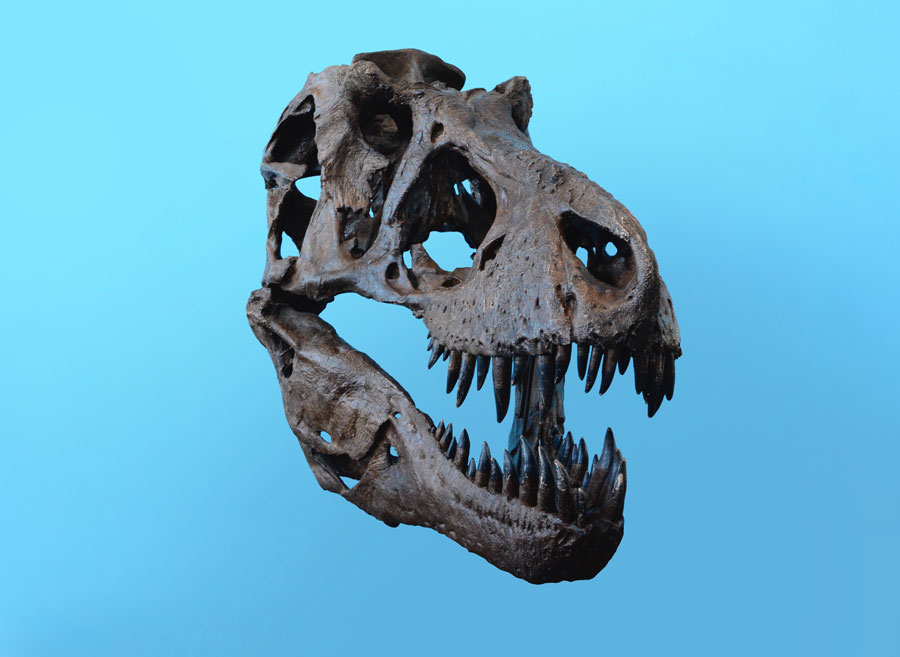KidZone Animals: Dinosaurs
Fossils
A fossil is ancient life that has been preserved, which often means being turned into a different material like rock or minerals. A fossil can only be made if the ancient life is buried enough. The general rule of thumb for fossil burial is that the more quickly and thoroughly a fossil is buried the better the quality of the fossil. Also, ancient life can only be preserved if it is buried in sedimentary rock.
Here is a quick crash course in rock types:
- Igneous Rocks: Old rocks (of any type) are heated up until they are melted. Then they cool down and harden to become igneous rocks.
- Metamorphic Rocks: Old rocks (of any type) are heated up, but not so hot that they melt. Then they are squeezed by the earth to become metamorphic rocks.
- Sedimentary Rocks: Old rocks (of any type) are weathered and broken up into smaller and smaller pieces, which are called sediment. Sediment gathers in places where water collects (basins). When the sediments are pressed down they form into sedimentary rocks.
Fossils can't typically form in igneous rocks or metamorphic rocks because the ancient life would have to be buried and then heated up, which would often destroy the fossil. Whereas sedimentary rocks preserve the fossils instead of destroying them.
Once a fossil has been buried, there are a bunch of different ways to make a fossil depending on the type of ancient life that has been buried. I haven't explained every type of fossilization but I have included a few different methods:
- Permineralization: When ancient life is buried in sedimentary rock, mineral-rich water flows through the rock and past the ancient life. These minerals wear away the original materials and replace it with rock. This is a very common type of preservation for animals because it works really well on bones. An unfortunate side-effect is that the fossils are much heavier than you'd expect. After all, they are rocks!
- Carbonization: When ancient life is buried in sedimentary rock, lots of pressure is applied on the ancient life. Sometimes the ancient life is squished so much that nothing remains but a thin carbon film (this looks like a thin black impression of the ancient life). This works best for smaller ancient life like insects or plants.
- Casts and Molds: When ancient life is buried in sedimentary rock, it makes a an impression in the rock. When the ancient life decays, a mold of the ancient life is formed. If more sediment falls into the mold and forms a sedimentary rock, then a cast can form. The nice thing about this type of preservation is that it doesn't just preserve ancient life but also behvaior of ancient life (like footprints for example).

A mold of a mesoaurus skeleton.
Photographed by Tee La Rosa;
used with permission under CC BY-ND 2.0
One of the key facts about fossilization is that soft materials in ancient life aren't typically preserved. That is why we find a lot of skeletons and bones but very little soft tissues like skin or organs. However, sometimes we get some really cool cases of near-perfect preservation or mummification.
